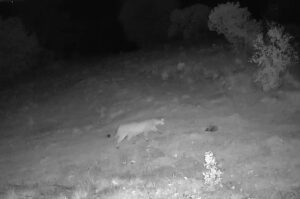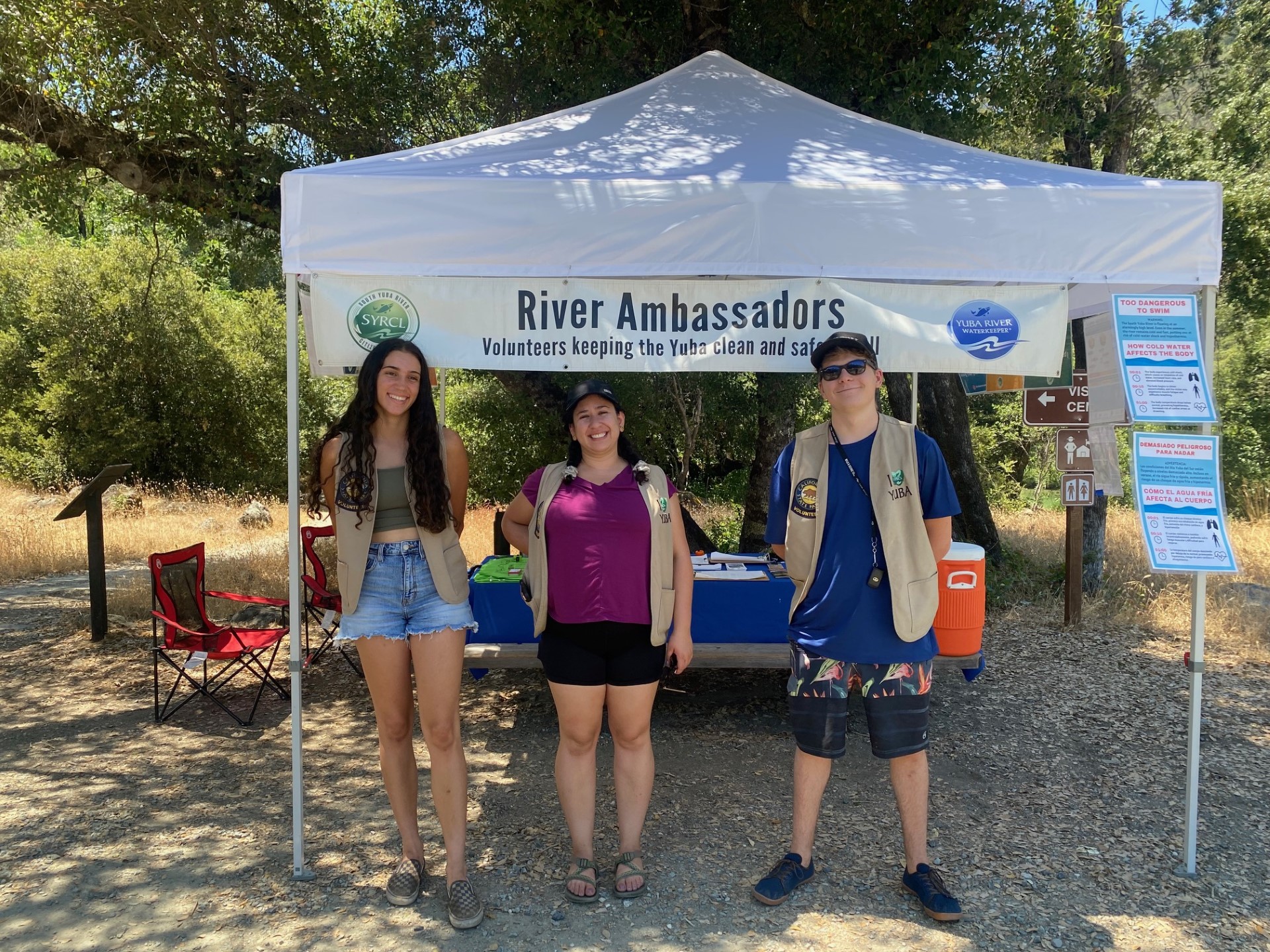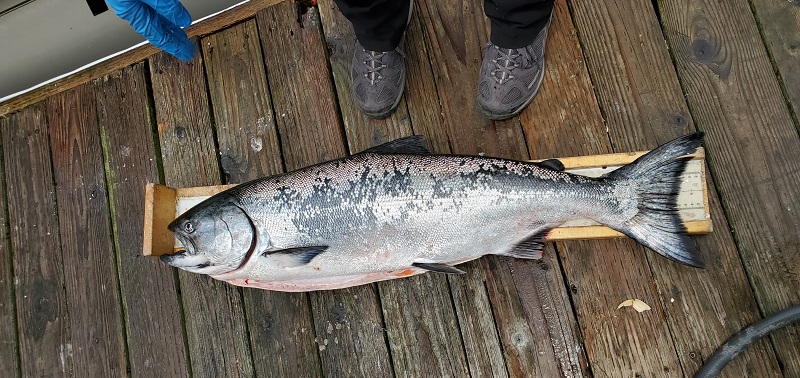Mountain Lions – An Awesome Keystone Predator
The Yuba River Watershed is home to a diverse and abundant collection of plants and animals. One animal that is capable of eliciting admiration, respect, and fear is the mountain lion. Recent sightings of mountain lions around the watershed prompted us to share a bit more about this keystone predator.
The mountain lion (Puma concolor) is native to North and South America, with a range extending from the Canadian Yukon down to the southern Andes. These big cats have the most widespread habitat range of any large, wild, terrestrial mammal in the Western Hemisphere. As a result of their extensive territory, mountain lions are referred to by a wide variety of names, including catamount, cougar, painter, panther, and puma.
Mountain lions are large, tan cats, with tawny-beige fur covering most of their bodies and a whitish-gray belly and chest. Black markings adorn the tip of the tail, ears, and around the snout. While the cats’ size can vary widely depending on their geographic location (with smaller cats residing closer to the equator and their larger relatives inhabiting spaces closer to the poles), males generally weigh between 115 and 220 pounds and females weigh between 64 and 141 pounds.
Mountain lions are territorial and (mostly) solitary by nature, using pheromones and physical signs (such as claw markings and feces) to mark their territory. They are largely nocturnal (active during the night and sleeping during the day) and crepuscular (active primarily during twilight period), although daytime sightings do sometimes occur.
The mountain lion is an ambush predator that utilizes stealth while pursuing a wide variety of prey species. They are obligate carnivores (meaning they only eat meat), and while their primary food source is deer and other ungulates (large mammals with hooves), they have also been known to hunt and feed on rodents and insects. These large cats prefer habitats with dense underbrush and rocky outcroppings to allow them to effectively stalk and hunt their prey, habitat found throughout the Yuba River watershed.

Unlike other large cats, mountain lions do not (and cannot) roar. Instead, they vocalize and communicate through a variety of growls, yowls, snarls, and hisses. During the mating season, females in estrus (period of sexual receptivity and fertility in female mammals) produce caterwauls or shrieks to attract males, with males responding with similar calls. Mothers and their young kittens communicate through an assortment of whistles, chirps, mews, and purrs. These sounds are very similar to those we associate with a much smaller relative of mountain lions, the house cat. To hear a clip containing just a few examples of the wide range of a mountain lion’s vocalizations, click here.

Mountain lions can breed year-round, with females usually giving birth to a litter of 1 to 6 kittens every two years, so the video below that appears to show a pregnant mountain lion, is a special one. Female mountain lions are solely responsible for caring for the kittens (also called cubs) after they’re born. Kittens are born blind and are initially completely dependent upon their mother. Newborn mountain lions are born with spots and ringed tails that fade over time and eventually disappear by the age of 2.5 years. As the kittens grow, they begin to accompany their mother on her hunts around six weeks old. At six months, they begin to venture out and hunt small prey on their own. Female kittens usually leave their mothers at two years old, while male kittens leave the safety of their mother’s care earlier.

Mountain lions are considered to be a keystone species, which means they play a crucial and unique role in our watershed. They are a species on which other species in an ecosystem depend. A keystone species is often (but not always) a predator. The populations of prey species (like deer, rabbits, rodents, etc.) in an ecosystem are at least partly controlled by the presence of mountain lions.
Additionally, the feeding behavior of prey species and the locations of their nests and burrows are largely a reaction to a mountain lion’s activity and proximity. As a keystone species, mountain lions also influence the movement and behaviors of other predators (like coyotes and bears) and scavengers (like vultures) with which they share a habitat.
No ecosystem has the capacity to support an unlimited amount of plants or animals and, without mountain lions to keep their numbers in check, deer and other herbivorous species would soon begin to compete with one another for food and water resources. In fact, the populations of various prey species usually decline without the presence of a predator, such as a mountain lion.
Our proximity to so many beautiful and wild plants and animals is just one (of many) reason why this watershed is so special to so many of us. However, with our proximity to the wilds of nature comes the heightened possibility of human – animal/plant interaction. Mountain lion attacks on humans are rare but have grown slightly in more recent years, as people have increasingly moved into and occupied more and more of the cats’ territory.
To help prevent an interaction with a mountain lion and to keep both yourself and these big cats safe, avoid hiking at dawn and dusk. Mountain lions are most active when their preferred prey species (deer) are most active, which tends to be in the hours preceding sunrise and following sunset.
If you do happen to cross paths with a mountain lion, resist the urge to run away. Running can trigger a mountain lion’s instinct to give chase. Do everything you can to appear as large as possible; raise and wave your arms slowly, open your jacket if you are wearing one, and speak loudly in a firm voice. Most mountain lions will try to avoid a confrontation if they don’t feel that they (or their kittens) are being threatened.
Throughout history, mountain lions have been admired, respected, feared, and maligned. Hopefully this article has shed some light on these amazing, beautiful, and wild animals and created a foundation of understanding for one of the many incredible animals that shares our watershed.
To learn more about mountain lions, visit the U.S. Department of Agriculture’s Forest Service and the National Wildlife Federation.
Did you enjoy this post?
Get new SYRCL articles delivered to your inbox by subscribing to our ENews.




